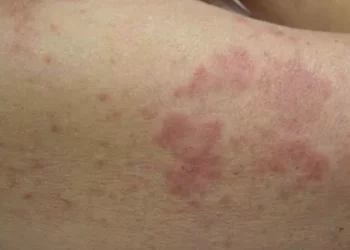Ringworm, despite its name, is not caused by worms. Rather, it is a fungal infection that affects the skin, hair, and nails. Defined by circular rashes, itching, redness, and sometimes hair loss, ringworm can manifest in various forms depending on the affected area, such as the scalp, body, groin, or feet. Understanding its causes is crucial for effective treatment. Contrary to common misconception, ringworm is not caused by bacteria but rather by a group of fungi known as dermatophytes, which invade the outer layer of the skin. In this article, we delve into the intricacies of ringworm, exploring its causes, symptoms, types, and treatment options.
Defining Ringworm: A Fungal Intruder
Ringworm, medically termed as dermatophytosis or tinea, is a contagious fungal infection caused by various species of dermatophytes. These fungi thrive on dead tissues of the skin, hair, and nails, leading to characteristic symptoms like circular rashes, itching, and redness. Despite its name, there are no worms involved in this condition.
Unraveling the Causes of Ringworm: Dermatophytes on the Prowl
The primary culprit behind ringworm is a group of fungi called dermatophytes. These fungi have a predilection for keratin, a protein found in the skin, hair, and nails. When dermatophytes invade the outer layer of the skin, they trigger an inflammatory response, leading to the characteristic symptoms of ringworm. It is important to note that bacteria do not play a role in the development of ringworm, contrary to popular belief.
Deciphering the Symptoms of Ringworm: Recognizing the Telltale Signs
The symptoms of ringworm can vary depending on the affected area of the body. However, common indicators include circular or ring-shaped rashes, itching, redness, and sometimes, hair loss. These symptoms may intensify over time if left untreated, making early recognition and intervention crucial for effective management.
Exploring the Types of Ringworm: Diverse Manifestations
Ringworm can manifest in various forms, each affecting different areas of the body. The main types of ringworm include:
1. Tinea Capitis (Scalp Ringworm): This type affects the scalp and hair follicles, leading to bald patches, scaly skin, and sometimes, swollen lymph nodes.
2. Tinea Corporis (Body Ringworm): Characterized by circular rashes with raised edges and a clear center, this type affects the torso, limbs, and face.
3. Tinea Cruris (Groin Ringworm): Also known as jock itch, this type affects the groin area, leading to red, itchy rashes that may spread to the inner thighs and buttocks.
4. Tinea Pedis (Athlete’s Foot): Commonly affecting the feet, especially between the toes, this type causes itching, redness, and peeling skin.
Navigating Treatment Options: Combatting Ringworm
Treatment for ringworm typically involves antifungal medications aimed at eradicating the fungal infection. Depending on the severity and location of the infection, treatment options may include:
1. Topical Antifungal Creams and Ointments: These are often the first line of treatment for mild to moderate cases of ringworm. They are applied directly to the affected area and help eliminate the fungus.
2. Oral Antifungal Medications: In cases of severe or widespread ringworm, oral antifungal medications may be prescribed by a healthcare professional. These medications work from within the body to combat the fungal infection.
3. Antifungal Shampoos: For cases of scalp ringworm, medicated shampoos containing antifungal agents may be recommended to help clear the infection from the scalp and hair follicles.
4. Maintaining Proper Hygiene: Alongside medical treatment, maintaining good hygiene practices such as keeping the affected area clean and dry can help prevent the spread of ringworm and aid in recovery.
Conclusion
In conclusion, ringworm is not caused by bacteria but rather by dermatophyte fungi that invade the skin, hair, and nails. Understanding the true nature of ringworm is essential for accurate diagnosis and effective treatment. By recognizing the symptoms, identifying the type of infection, and implementing appropriate treatment strategies, individuals can successfully overcome this common fungal ailment. Remember, when it comes to ringworm, knowledge is key in combating the infection and preventing its recurrence.
In this comprehensive exploration of ringworm, we have debunked the myth surrounding its causative agent. Despite its misleading name, ringworm is indeed a fungal infection, not a bacterial one. This understanding is pivotal in devising targeted treatment plans and educating the public about preventive measures. As research continues to unravel the complexities of fungal infections, it is imperative to disseminate accurate information to dispel misconceptions and promote optimal healthcare practices. With a concerted effort to enhance awareness and foster collaboration between healthcare providers and the community, we can effectively combat ringworm and improve the overall well-being of individuals worldwide.


















